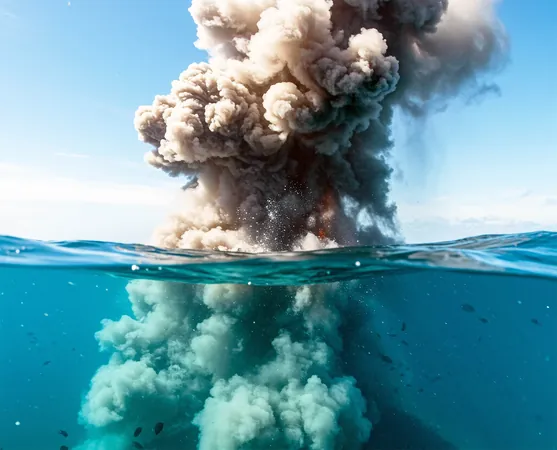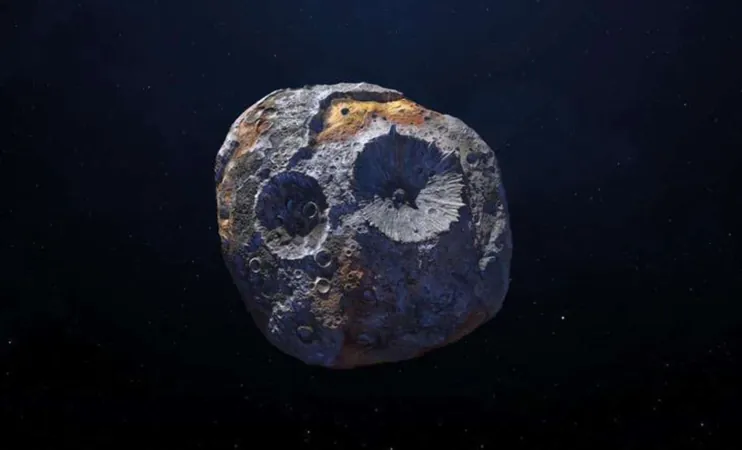
The Ocean's Dark Past: Could History Repeat Itself?
2025-07-01
Author: Ling
An Oxygen Crisis Looms Over Our Oceans
Long ago, undersea volcanoes in what is now South Africa unleashed a staggering 20,500 gigatons of carbon dioxide into the ocean-atmosphere system around 183 million years ago. This catastrophic event severely disrupted the delicate balance of oxygen in the water, leading to widespread marine extinctions.
Fast forward to today: human activities from 1850 to 2019 have released around 2,390 gigatons of CO2—12% of the total carbon emitted during the Jurassic period—in just under two centuries. The urgent question now is: could our modern world experience a similar fate?
The Toarcian Oceanic Anoxic Event: A Lesson from the Past
Enter Professor François Tissot from the California Institute of Technology, who investigates the aftermath of the Jurassic seas. He cites evidence from limestone formations in southern Italy that document the Toarcian Oceanic Anoxic Event (T-OAE), a period when oxygen vanished from vast ocean areas, leading to the extinction of numerous marine species.
During this crisis, a staggering 6 to 8 percent of the seafloor was eclipsed by dead, oxygen-depleted water, an area 28 to 38 times larger than today's anoxic zones. Fossil records vividly illustrate this tragedy: they exist in ocean sediments before the T-OAE but abruptly disappear thereafter.
The Trigger: A Volcanic Cataclysm
The Karoo-Ferrar large igneous province ignited this event by emitting enormous carbon quantities, heating the planet, slowing ocean mixing, and radically altering water chemistry. This toxic cocktail led to anoxic conditions that persisted for a staggering 300,000 to 500,000 years before natural processes restored balance.
The Consequences of Carbon Surges
As greenhouse gases surged, surface waters warmed, creating a stratification that blocked the essential downward flow of oxygen. Warmer water, which holds less gas, intensified this crisis. Nutrient runoff from volcanic ash likely fueled rampant algal blooms that further depleted oxygen when they decayed.
Tracing the Ancient Ocean's Memory
Tissot's team utilized 30 limestone samples and advanced modeling techniques to trace ancient oxygen levels, revealing peaks and troughs in oxygen loss and restoration akin to past volcanic emissions. Their findings underscore how easily today's oceans could reach critical lows if carbon emissions continue unabated.
A Glimmer of Hope: Learning from the Past
Modern oceans echo these ancient crises, as today only about 0.2% of the seafloor suffers from persistent hypoxia, primarily in marginal seas like the Black Sea. Alarmingly, global dissolved oxygen levels have dropped by nearly 2% since 1960. Experts warn that if climate trends continue, mid-depth marine zones could lose up to 20% of their oxygen by 2100, pushing many species past their survival limits.
Act Now to Prevent Ocean Suffocation
Historical events demonstrate that recovery from widespread anoxia can take tens of thousands of years, particularly if the carbon input is halted. Unlike sporadic volcanic eruptions, our emissions are relentless and deeply ingrained in our energy and food systems, making rapid change challenging.
To avert disaster, swift action is needed: reducing fossil fuel use, preserving carbon-sequestering ecosystems, and minimizing nutrient runoff could help slow oxygen depletion.
With modern technology—satellites, floats, and underwater sensors—we can monitor oxygen levels in real-time, granting policymakers the opportunity to intervene and prevent catastrophic thresholds from being crossed. Tissot's limestone findings remind us that while oceans might have long memories, their capacity to endure is finite.
Conclusion: The Call for Action
As the study published in the Proceedings of the National Academy of Sciences reveals, the history etched in our ocean sediments serves not just as a record of what once was, but a stark warning of what could be if we fail to act.





 Brasil (PT)
Brasil (PT)
 Canada (EN)
Canada (EN)
 Chile (ES)
Chile (ES)
 Česko (CS)
Česko (CS)
 대한민국 (KO)
대한민국 (KO)
 España (ES)
España (ES)
 France (FR)
France (FR)
 Hong Kong (EN)
Hong Kong (EN)
 Italia (IT)
Italia (IT)
 日本 (JA)
日本 (JA)
 Magyarország (HU)
Magyarország (HU)
 Norge (NO)
Norge (NO)
 Polska (PL)
Polska (PL)
 Schweiz (DE)
Schweiz (DE)
 Singapore (EN)
Singapore (EN)
 Sverige (SV)
Sverige (SV)
 Suomi (FI)
Suomi (FI)
 Türkiye (TR)
Türkiye (TR)
 الإمارات العربية المتحدة (AR)
الإمارات العربية المتحدة (AR)